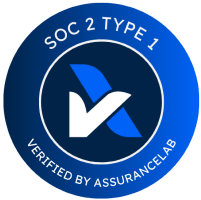Data plays a crucial role in the advertising industry. Advertisers rely on data to understand customer behavior and optimize campaigns. Advertising industry ETL tools help manage and utilize data effectively. These tools extract, transform, and load data, making it usable for analysis. The growing need for data-driven decision-making in advertising highlights the importance of advertising industry ETL tools. Marketers using these tools report improved customer experiences and increased sales. For example, 63% of data-driven marketers see better customer experience, while businesses using targeted ads see a 10% sales increase. The introduction of advertising industry ETL tools has revolutionized how data is handled, ensuring that ad campaigns are more efficient and effective.
Understanding ETL Tools
What are ETL Tools?
Definition and Components
ETL stands for Extract, Transform, Load. ETL tools help in extracting data from various sources, transforming it into a suitable format, and loading it into a destination system. These tools consist of three main components: extraction, transformation, and loading. Extraction involves retrieving data from different sources. Transformation modifies the data to meet specific requirements. Loading transfers the transformed data to a target database or data warehouse.
How ETL Tools Work
ETL tools operate by following a structured process. First, the tool extracts raw data from multiple sources such as databases, APIs, and flat files. Next, the tool transforms the data by cleaning, filtering, and aggregating it. Finally, the tool loads the processed data into a destination system for analysis. This process ensures that data is accurate, consistent, and ready for use in decision-making.
Types of ETL Tools
Open Source ETL Tools
Open source ETL tools offer flexibility and cost-effectiveness. Developers can customize these tools to fit specific needs. Popular open source options include Talend and Apache Nifi. These tools provide robust features for data integration and transformation.
Commercial ETL Tools
Commercial ETL tools come with comprehensive support and advanced features. Informatica and IBM DataStage are well-known commercial options. These tools offer extensive capabilities for data management and integration. Informatica reported a revenue growth of 7% in 2020, showcasing its strong market presence. Another noteworthy tool is TapData, an emerging real-time ETL solution that is gaining attention for its excellent performance in real-time data integration.
Cloud-based ETL Tools
Cloud-based ETL tools provide scalability and ease of use. These tools operate on cloud platforms, allowing users to handle large data volumes efficiently. Oracle Data Integrator, IBM Cloud Pak for Data and TapData Cloud are examples of cloud-based solutions. These tools simplify integration by automating manual tasks.
Key Features of ETL Tools
Data Extraction
Data extraction is the first step in the ETL process. ETL tools retrieve data from various sources, including databases, APIs, and flat files. Effective extraction ensures that data is collected accurately and comprehensively.
Data Transformation
Data transformation involves modifying the extracted data to meet specific requirements. ETL tools clean, filter, and aggregate data during this phase. Transformation ensures that data is consistent and ready for analysis.
Data Loading
Data loading is the final step in the ETL process. ETL tools transfer the transformed data to a target database or data warehouse. Efficient loading ensures that data is readily available for decision-making and analysis.
Benefits of ETL Tools for Advertisers

Improved Data Quality
Data Cleansing
Data quality plays a crucial role in advertising success. Advertising industry ETL tools automate data cleansing processes. These tools remove inaccuracies and inconsistencies from raw data. Clean data ensures reliable analysis and reporting. Automated cleansing reduces manual errors and saves time. Advertisers can trust the data to make informed decisions.
Data Consistency
Consistency in data is essential for accurate insights. Advertising industry ETL tools standardize data formats and structures. These tools ensure uniformity across different data sources. Consistent data enables seamless integration and comparison. Advertisers can rely on consistent data for strategic planning. High-quality data leads to better campaign performance.
Enhanced Data Integration
Combining Data from Multiple Sources
Advertisers collect data from various platforms and channels. Advertising industry ETL tools integrate data from multiple sources into a single repository. This integration provides a comprehensive view of customer behavior. Advertisers can analyze data holistically to identify trends and patterns. Integrated data supports more effective targeting and personalization.
Real-time Data Integration
Real-time data integration is vital for dynamic advertising strategies. Advertising industry ETL tools enable real-time data processing and updates. These tools provide up-to-date information for timely decision-making. Advertisers can adjust campaigns based on current data insights. Real-time integration enhances responsiveness and agility in marketing efforts.
Better Decision Making
Data-Driven Insights
Data-driven insights are essential for optimizing ad campaigns. Advertising industry ETL tools transform raw data into actionable insights. These tools provide detailed analytics and visualizations. Advertisers can identify key performance metrics and areas for improvement. Data-driven insights support evidence-based decision-making. Improved insights lead to more effective advertising strategies.
Predictive Analytics
Predictive analytics helps advertisers anticipate future trends. Advertising industry ETL tools facilitate predictive modeling and analysis. These tools use historical data to forecast outcomes and behaviors. Advertisers can predict customer responses and optimize ad spend. Predictive analytics empowers proactive and strategic planning. Enhanced foresight drives better campaign results.
Use Cases of ETL Tools in Advertising
Campaign Performance Analysis
Tracking Key Metrics
Advertisers need to track key metrics to measure campaign success. Advertising industry ETL tools automate the collection and processing of data from various sources. These tools help advertisers monitor metrics such as click-through rates, conversion rates, and return on ad spend. Accurate tracking allows advertisers to understand the effectiveness of their campaigns. Data-driven insights enable advertisers to make informed decisions and optimize their strategies.
Optimizing Ad Spend
Optimizing ad spend is crucial for maximizing return on investment. Advertising industry ETL tools provide detailed analytics that help advertisers allocate budgets more effectively. These tools analyze data to identify high-performing channels and underperforming ones. Advertisers can adjust their spending based on these insights to achieve better results. Efficient budget allocation leads to improved campaign performance and increased profitability.
Customer Segmentation
Identifying Target Audiences
Identifying target audiences is essential for effective advertising. Advertising industry ETL tools integrate data from multiple sources to create comprehensive customer profiles. These tools analyze demographic, behavioral, and transactional data to segment audiences accurately. Advertisers can identify specific groups that are most likely to respond to their campaigns. Targeted advertising increases engagement and conversion rates.
Personalizing Ad Content
Personalizing ad content enhances customer experiences and drives better results. Advertising industry ETL tools enable advertisers to tailor their messages based on customer preferences and behaviors. These tools use data to create personalized content that resonates with individual audience segments. Personalized ads are more relevant and engaging, leading to higher click-through rates and conversions. Effective personalization strengthens customer relationships and loyalty.
Attribution Modeling
Understanding Customer Journeys
Understanding customer journeys is vital for optimizing marketing efforts. Advertising industry ETL tools help advertisers map out the entire customer journey from initial contact to final conversion. These tools collect and analyze data from various touchpoints to provide a holistic view of customer interactions. Advertisers can identify key moments that influence purchasing decisions. Comprehensive journey mapping enables advertisers to refine their strategies and improve customer experiences.
Allocating Marketing Budgets
Allocating marketing budgets effectively requires a deep understanding of attribution models. Advertising industry ETL tools facilitate the analysis of different attribution models to determine the impact of each marketing channel. These tools help advertisers allocate budgets based on the contribution of each channel to the overall conversion. Data-driven budget allocation ensures that resources are invested in the most effective channels. Optimized budget distribution leads to better campaign performance and higher returns.
Considerations for Advertisers When Choosing ETL Tools
Scalability
Handling Large Data Volumes
Advertisers often deal with large amounts of data. ETL tools must handle these volumes efficiently. The ability to process and manage extensive datasets ensures smooth operations. Scalability becomes crucial as data grows over time. ETL tools should support high data throughput without compromising performance. Efficient handling of large data volumes leads to accurate and timely insights.
Future Growth
Businesses aim for growth, and data needs will expand accordingly. ETL tools must accommodate future data growth. Scalable solutions prevent the need for frequent upgrades. Investing in scalable ETL tools ensures long-term usability. Advertisers can focus on strategy rather than technical limitations. Future-proof ETL tools support sustained business development.
Ease of Use
User-Friendly Interfaces
User-friendly interfaces simplify the adoption of ETL tools. Intuitive designs reduce the learning curve for new users. Advertisers benefit from easy navigation and operation. Clear visualizations aid in understanding complex data processes. User-friendly ETL tools enhance productivity and efficiency.
Minimal Technical Expertise Required
Not all advertisers possess advanced technical skills. ETL tools should cater to users with minimal technical expertise. Simplified workflows and automation features become essential. These tools should offer guided setups and pre-built templates. Advertisers can focus on data analysis rather than technical configurations. Accessible ETL tools democratize data management.
Cost
Initial Investment
Cost considerations play a significant role in selecting ETL tools. Initial investment includes software purchase and implementation expenses. Advertisers must evaluate the return on investment. Affordable options provide value without compromising features. Cost-effective ETL tools enable businesses to allocate budgets wisely.
Ongoing Maintenance
Maintenance costs impact the overall budget for ETL tools. Regular updates and support services ensure optimal performance. Advertisers should consider the long-term financial commitment. Transparent pricing models help in budgeting accurately. Cost-efficient maintenance plans contribute to sustainable operations.
ETL tools hold significant importance for advertisers. These tools streamline data management and enhance advertising strategies. ETL tools improve data quality, enable real-time integration, and support data-driven decision-making. Advertisers can achieve better campaign performance and customer insights. Investing in suitable ETL tools can transform raw data into valuable insights. Advertisers should explore ETL solutions to stay competitive in the data-driven advertising landscape.
Transform Your Advertising Data with TapData: The Low-Code, Real-Time ETL Solution
Are you looking for a powerful yet easy-to-use ETL tool to revolutionize your advertising campaigns? Look no further than TapData!
Why Choose TapData?
-
Low-Code Platform: Simplify your data integration with a user-friendly interface that requires minimal technical expertise.
-
Real-Time Data Integration: Access up-to-date insights to make timely and informed decisions.
-
Comprehensive Support: Benefit from extensive capabilities and reliable customer support for all your data management needs.
Key Features
-
60+ Built-in CDC connectors
-
Point to point or hub architecture
-
No code with drag & drop experience
-
Javascript & Python UDF (user defined functions) in the pipeline
-
Centralized caching: Reduces the need for numerous data pipelines, optimizing performance and resource utilization
-
Heterogeneous database support, from SQL to NoSQL or vice versus
-
Multi-table join / Building materialized views (beta)
-
Community-driven: open-source and built with the community for the community, ensuring a solution that meets real-world needs
Success Stories
Join the growing number of advertisers who have transformed their data management and achieved remarkable results with TapData. Our clients report improved customer experience, increased sales, and more efficient ad spend.
Ready to Get Started?
TapData is here to help you unlock the full potential of your advertising data. Discover how our low-code, real-time ETL solution can enhance your data-driven strategies and drive your business forward.
Transform your advertising data into actionable insights with TapData. Make smarter decisions, optimize your campaigns, and achieve better results. Explore TapData now!


